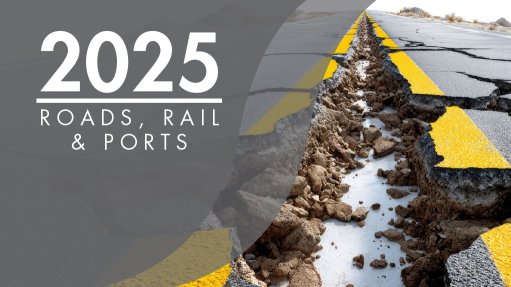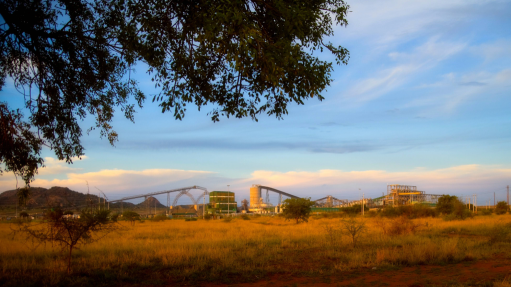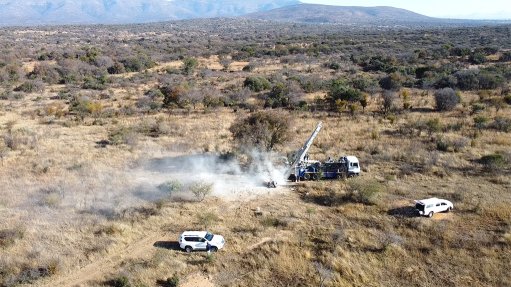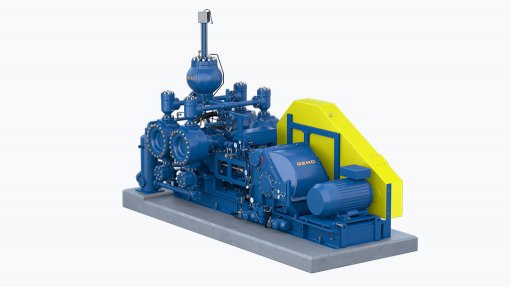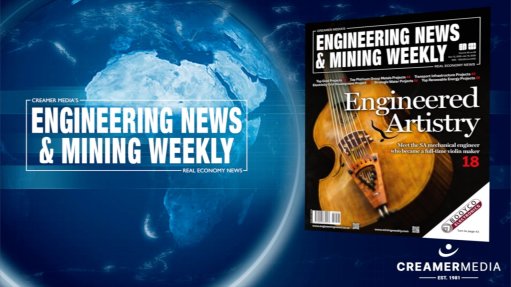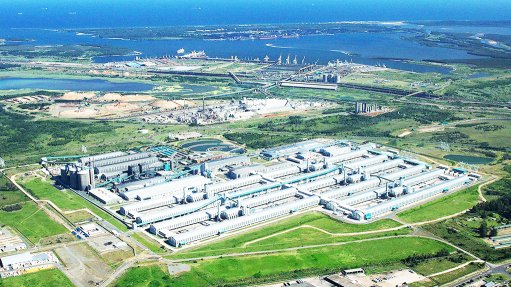Health of diesel-powered equipment operators highlighted

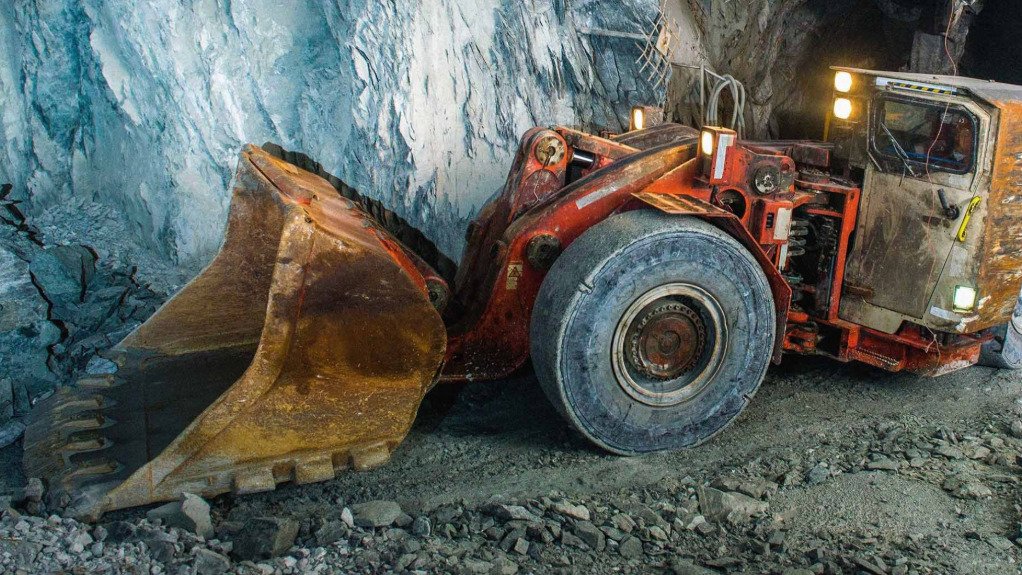
TAKE IT IN A co-authored paper has been released by CEO-led organisation ICMM with the aim of making employers more aware of the dangers of diesel particulate matter exposure in the workplace
Every year, World Day for Health and Safety at Work on April 28 offers a reminder that no job should come at the cost of a person’s health or safety, says global CEO-led organisation ICMM health and safety manager Michael Duvenhage and innovation director Bryony Clear Hill.
The message provided impetus to Duvenhage and Clear Hill’s co-authored paper, published last month, named ‘Managing Diesel Particulate Matter (DPM) Exposure: A safer future for underground mining’.
DPM is most commonly associated with industries that use diesel-powered equipment, including mining, transportation, construction, and manufacturing.
The paper is a call to action to reduce workplace risks and strengthen the systems that protect workers.
In mining, this means raising awareness of occupational risks and promoting the implementation of critical health and safety controls.
A pressing but often overlooked hazard in underground mining is exposure to DPM.
Diesel engines, valued for their power and reliability, emit tiny airborne particles that accumulate in enclosed mine environments which is exacerbated by limited ventilation, say Duvenhage and Clear Hill.
This can result in diesel exhaust concentrations that are more than 100 times higher than those above ground.
Consequently, industry, by accelerating the adoption of proven controls and cleaner technologies, can significantly reduce DPM exposure — protecting underground workers and advancing a safer, healthier future for mining.
Duvenhage and Clear Hill stress that the solutions exist, and what is needed now is momentum and leadership.
Understanding the Risk
DPM is produced through the incomplete combustion of diesel fuel. It comprises microscopic particles containing elemental carbon, organic compounds, ash and trace heavy metals.
Prolonged exposure to high concentrations of DPM can lead to health impacts including severe respiratory and cardiovascular diseases.
It has been linked to lung cancer by global foundation International Agency for Research on Cancer.
Importantly these risks are real and preventable, and acute symptoms, such as eye and respiratory irritation, can escalate into chronic conditions.
The two suggest that managing DPM is complicated by operational and regulatory challenges.
Underground mines often extend kilometres beneath the surface, making efficient ventilation difficult.
Further, older diesel engines emit more particles than newer models, necessitating different monitoring requirements across equipment types and operating conditions – even within a single operation.
Despite growing recognition of the risks, there is no harmonised global standard for DPM exposure. This has prompted different regulators to introduce increasingly stringent occupational exposure limits aimed at safeguarding worker health.
Yet this comes without clear guidance on how to meet these limits, effectively leaving operators without a clear path forward.
Practical Steps for Managing DPM
Effective DPM management requires clear, structured management plans, starting with understanding baseline levels of exposure and including engineering controls, administrative measures, personal protective equipment and continuous monitoring and verification.
Duvenhage and Clear Hill suggest steps to create a broader culture of safety, responsibility, and care.
Firstly, employers must define or establish a dedicated committee to define the DPM project scope and conduct a thorough compliance review. This ensures that all relevant regulatory requirements are identified and addressed from the outset.
Employers must assess the situation by gathering and measuring current DPM emissions and exposure levels, using a range of monitoring techniques, to provide an accurate environmental picture.
The situation assessment must then be analysed using data on hand — a process that involves evaluating emissions sources, prioritising potential risks and developing targeted control strategies aimed at reducing DPM exposure.
Some form of control must be enforced, by implementing targeted measures to address the identified risks, selecting appropriate actions from the hierarchy of controls.
And finally, employers must verify and adopt ongoing monitoring of the effectiveness of the management plan — assessing whether implemented controls are working as intended.
Importantly Duvenhage and Clear Hill stress that, where needed, the plan must be revisited to improve control efficacy.
They reaffirm that the technologies and controls needed already exist, but the challenge lies in scaling adoption across the industry.
By prioritising worker health, embedding comprehensive strategies, and investing in innovation, mining companies can protect their people while meeting regulation, futureproof their operations, strengthen worker trust and demonstrate responsible leadership.
“Together, we can drive lasting change—building safer, healthier workplaces for today’s miners and future generations,” conclude Duvenhage and Clear Hill.
Article Enquiry
Email Article
Save Article
Feedback
To advertise email advertising@creamermedia.co.za or click here
Press Office
Announcements
What's On
Subscribe to improve your user experience...
Option 1 (equivalent of R125 a month):
Receive a weekly copy of Creamer Media's Engineering News & Mining Weekly magazine
(print copy for those in South Africa and e-magazine for those outside of South Africa)
Receive daily email newsletters
Access to full search results
Access archive of magazine back copies
Access to Projects in Progress
Access to ONE Research Report of your choice in PDF format
Option 2 (equivalent of R375 a month):
All benefits from Option 1
PLUS
Access to Creamer Media's Research Channel Africa for ALL Research Reports, in PDF format, on various industrial and mining sectors
including Electricity; Water; Energy Transition; Hydrogen; Roads, Rail and Ports; Coal; Gold; Platinum; Battery Metals; etc.
Already a subscriber?
Forgotten your password?
Receive weekly copy of Creamer Media's Engineering News & Mining Weekly magazine (print copy for those in South Africa and e-magazine for those outside of South Africa)
➕
Recieve daily email newsletters
➕
Access to full search results
➕
Access archive of magazine back copies
➕
Access to Projects in Progress
➕
Access to ONE Research Report of your choice in PDF format
RESEARCH CHANNEL AFRICA
R4500 (equivalent of R375 a month)
SUBSCRIBEAll benefits from Option 1
➕
Access to Creamer Media's Research Channel Africa for ALL Research Reports on various industrial and mining sectors, in PDF format, including on:
Electricity
➕
Water
➕
Energy Transition
➕
Hydrogen
➕
Roads, Rail and Ports
➕
Coal
➕
Gold
➕
Platinum
➕
Battery Metals
➕
etc.
Receive all benefits from Option 1 or Option 2 delivered to numerous people at your company
➕
Multiple User names and Passwords for simultaneous log-ins
➕
Intranet integration access to all in your organisation





